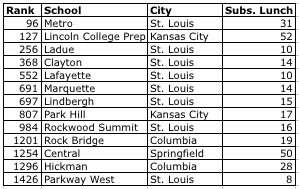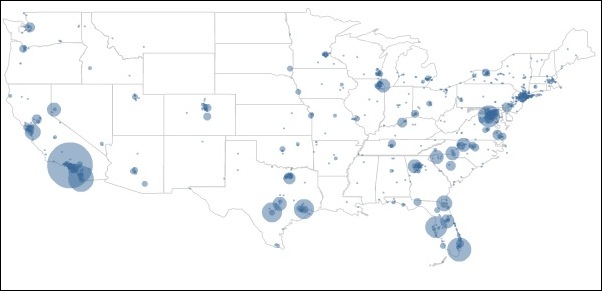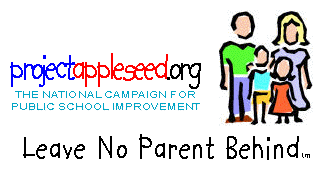Best high schools list out

The perennial Newsweek best high school list compiled by Jay Mathews is out again. Valid criticisms of the list may be made, but the criteria is clear, is easy to understand and has changed the education landscape.
Only 13 schools from Missouri made the list, but at least that is up one from last year. In St. Louis Eureka dropped off the list, but Parkway West made it.
Kansas City only has one non-selective school on the list versus seven for St. Louis. There are, however, four high schools on the list on the Kansas City, Kansas side. Both high schools in Columbia made the list, which is impressive. The Springfield high school with 50 percent on subsidized lunch that made the list is not, as far as I can tell, selective. I believe that is the high school closest to the university, which may skew the subsidized lunch demographics, but those numbers are still impressive.
In 2005 St. Louis schools dominated the 10 schools from Missouri that made the list with only Lincoln College Prep, Hickman in Columbia and Park Hill in Kansas City rounding out the list. Lafayette in St. Joseph made the list in 2006, which would be nice to see return.
I think the geographical map of the top 1300 schools is interesting with a sea of blue on the coasts and in Florida.

I zoomed in on Missouri and the surrounding states, which show blue in the urban areas with some pinpricks in some college towns.

With Missouri Virtual Instruction Program offering AP courses (pdf), students in rural schools now have more opportunities to take advanced classes. I would like to see more rural schools make the list.
Schools have to continually increase the percentage of students taking AP/IB exams just to stay on the list. For example, Ladue improved its index number from last year but dropped in rank. This is meant to be a “race to the top,” where the top means access to challenging courses for as many students as possible.
A new, non-researched phenomenom has begun in which some schools are all-out embracing the AP courses as a challenge for struggling students in coursework that doesn’t require prerequisites.
The rise of high-participation, low-passing-rate AP schools like Bell and Hogan has led NEWSWEEK this year to put them in a separate category, the Catching-Up list, for schools that have met the NEWSWEEK standard for college-level test participation but have AP passing rates below 10 percent. Once such schools pass the 10 percent passing mark, they will have about the same number of passing tests as the average American school, where passing rates are higher but participation is much lower. (AP Programs as Educational Shock Therapy)
Two high schools in Kansas City are using this approach. We’ll watch to see how they do next year.
Missouri ranges from 10 to 13 schools on the last from year to year. Next year, I would like to see that change and blown away.
Teach more content, please
I’m going to admit one of my biggest secrets here on the Net—I watch American Idol. OK, now that that’s done, I’ll proceed.
My youngest loves to sing and decided, after watching Peter Pan at the Muny, to be on stage some day. Since music is not one of my talents and she is still quite young, I asked a musically inclined friend for advice. He suggested just exposing her to a wide variety of music. I thought about that advice last season while watching American Idol; it was obvious to me that both of the two finalists were comfortable with an array of musical styles and had experience with them. Several of the top ten were true “just off the street” beginners, which really showed as they made it further in the contest. They were able to sing really well the style and songs they were used to but struggled when pushed out of their comfort zones and when asked to learn more songs each week. Those who had been performing for a long time (a lifetime, really) could pull from a wide background even if they knew the style the wanted to sing professionally. The winner needed to do more than just practice scales but to be familiar with the history of music and use that to help him develop his craft.
Likewise, kids need to know about the world around them to read. Practicing decoding is not enough. Studying vocabulary, even word etymology, isn’t enough. In fact, discussing the finer points of well written fiction isn’t enough. Kids need to be exposed to a myriad of topics and to experience a wide variety of activities to comprehend what they’re reading. The YouTube clip above demonstrates this well. (hat tip Matthew K. Tabor)
I can think of three ways to increase the content of what is taught in the elementary schools.
1. By upper elementary school students should be spending more time on content rather than process. As a booklover myself, I love the fiction that elementary teachers encourage and appreciate the variety of styles they require (mysteries, historical fiction, science fiction, etc.). I understand that kids pick up a lot about the world around them by reading fiction, especially if directed to certain books and genres. However, students rarely are required to read non-fiction except academic books such as textbooks and an occasional biography. I love Jay Mathew’s idea of assigning a non-fiction book to high school students and would like to see this start in elementary school.
2. Most schools use an incredibly high percentage of their minutes for reading with math taking up the lion’s share of the rest. Science and social studies are given substantially less time. Some teachers will make the most of their time, essentially double dipping it, by assigning books that relate to the science or social studies topic being covered. Well organized teaching teams can plan together to include other specials also; for example, elementary Spanish teachers can coordinate science or social studies topics when possible. Still, a more balanced schedule would give appropriate time for all areas, especially important in districts that can’t rely on the families to take the kids on a lot of vacations throughout the country (Williamsburg!) or make frequent trips to the Science Center. Adding time to the school day is probably needed.
3. Make the science and social studies MAP tests required, not optional. What gets tested gets taught.
I would love to hear other ideas. I especially liked the baseball and cricket examples in the YouTube clip above. Don’t miss it!
Can I have my kid's score, please?

Last semester I had a student tell me about the sneaky way she had to use to find out her child's reading level. I was appalled. I never asked which district and don't want to know. My kids' teachers have told me the reading scores at conferences, which I had assumed every teacher in the country did. I was disappointed to find out I was wrong.
Jay Mathews lists parent participation as a way to improve schools. Participation can mean fundraising for the PTO, showing up for teacher conferences, helping in the classroom or even having a voice in school policies. If parents aren't even given their own child's assessments and standardized test results, then any talk about increasing participation is just so much fluff, happy talk, can-we-get-some-money-out-of-you talk.
If I had more time, I would survey the local districts for participation rates (using multiple methods of participating) and see which factors had the highest correlation rate. My guess would be education level, more so than median income. Secondary factors might include size of district and transportation method.
A theory of mine is that schools that don't provide bus service would have higher parent participation. They already have to walk or drive the kids to school. Double points for the schools that don't have efficient carpool lanes. The parents might actually have to go inside to pick up the kids and see the teachers. Find me one of those schools that doesn't have high parental partnership.
Parents that want to know how to become more involved or help their school become more open can be inspired by St. Louis's own Project Appleseed, a national resource for improving parental involvement. Actually, it has a lot of good information for educators also.
Schools usually include in their mission statements about the importance of parent participation. I want to see them walk it, which includes the first steps of thinking of parents as partners and providing them with all testing and assessment results, not just when the parents ask for it.
Mo bronze high schools don't have achievement gap; they just don't serve minority populations

❝A successful high school should show high levels of student achievement, graduate almost all of its students and not let any demographic subgroup lag far behind.❞
Mathews counters that
❝such criteria automatically exclude virtually any school serving large numbers of poor or minority students.❞
I think he's onto something.
Rotherham seems to focus on the forest:
❝Remember that when Sara Mead and I took a look at the performance of the top 100 Challenge Index schools on their state assessments we found average black - white gaps in pass rates of 26 points in reading and 31 points in math. One school had a 61 point gap in math!❞

A high school like Alton made the U.S. News and World Report bronze star list with only 37% proficiency in math and 33.9% in reading. Sure their discrepancy numbers are only 3.5 in math and 9.8 in reading, but with only 7 African-American students in the high school (1.8%) and such low overall proficiency numbers, is it really a best school? It does have a high percentage of free/reduced lunch students, Missouri does have a tough test, and the school should be commended for the job it is doing, but that doesn't mean I would send my kids there. Maybe I would—I don't know because these numbers just don't provide enough information. (The number of AP courses offered is more relevant for me as a parent.)
While policy wonks and politicians debate the achievement gap, parents want their kids to go to the best high schools for their kids, which is the purpose of the rankings. The St. Louis Black Leadership Roundtable, a group working with the St. Louis area school districts to decrease the achievement gap, found that the best schools for African-American students were not the ones with the lowest achievement gaps.
❝A telling conclusion of the report was that schools with the highest achievement levels among black students - such as Clayton, Webster Groves and Kirkwood - often also had the greatest gap in achievement levels between whites and blacks.❞ (BLR 2005 Education Report Card, link to actual report card not operable)
Clayton has a reputation as one of the top public high schools in Missouri and has high (for Missouri) proficiency numbers (70.2 math, 63.8 reading) and relatively high numbers for black students (37.3 math, 22 reading). Again, wide discrepancy numbers (43.9 math, 55.7 reading). The district and others like it should be praised for choosing to continue in the voluntary transfer program instead of kept off of best high schools lists at the same time encouraged to improve black students' achievement. I prefer to focus on improving a subgroup's achievement over focusing on the achievement gap since lowering overall achievement decreases the gap.
The U.S. News & World Report eliminated any school in Missouri with an ethnic population (except Metro and Lincoln College Prep, which are selective). That is not the way to encourage student achievement for all.
(Mo. high school numbers from the Mo. DESE School Data and Statistics Database)
Zoooommmm!!!!! Changing our perspective

❝Our focus is not what works for policy makers but what is most useful for readers, particularly parents, trying to judge the quality of their local schools and others that might be available to them.❞

This dichotomy plays itself out issue after issue. As a mother I find myself looking at topics from a different viewpoint than as a teacher or someone interested in policy. We need a sliding scale to easily resize our perspective up and down, from individual child to classroom to school to whole system.
But, but, why isn't MYYYYY school on the Best Schools List?
The Newsweek list, compiled by Jay Mathews, uses the number of AP and IB exams a high school gives as its sole criteria. The idea is that students can improve their academics by taking AP courses. The idea is that any school can improve its rankings by encouraging more students to take the exams. While the list has its faults, the criterion is easy to understand. In St. Louis the better high schools are ranked higher, so it seems to make sense.
The new US News & World Report list though is different. The methodology is complex. A high school has to have its economically disadvantaged and minority populations outperform the state average on state tests. The focus here is on the achievement gap, which I will post on another time. If it passes this criteria, a college readiness score is given based on AP tests, both # given and average scores. High ranking schools are then slated into three categories: gold, silver and bronze.
While I appreciate the attempt to measure multiple factors and applaud overperforming schools, I have several concerns about this method of ranking:
☹Mixing of methods. Since the bronze high schools don't include college readiness scores, they should be treated as a separate ranking. When I looked up the state proficiency scores for the Missouri bronze scores, they were often fairly low. Most parents aren't going to read complicated methodology papers (pdf) demonstrating that these aren't actually the "best" but overperforming in some statistical manner.
☹Mismatch between audience and methodology. Jay Mathews explained this one well:
❝Our focus is not what works for policy makers but what is most useful for readers, particularly parents, trying to judge the quality of their local schools and others that might be available to them.❞
The overperforming schools list would be better given in Phi Delta Kappan than a general magazine.
☹Too many criteria. Yes, I know what is best is determined by what priorities someone has. That is why the Newsweek list works―people know what is being measured. If Andy Rotherham wants to focus on broader criteria, multiple lists would be more helpful for parents. I enjoyed clicking through the top magnet schools, top open enrollment etc.
☹Regional lists. If you don't live on the coasts or in other large states, you must not have any good schools―at least according to people who do these rankings. I don't know how the numbers work that way, but those of us in flyover country are used to being overlooked, but we have excellent college prep public high schools too.
In Missouri only Metro (St. Louis city's gifted magnet school) and Rock Bridge (suburban Columbia) made the silver list. No one disputes that these two are great high schools, and of course Metro has great numbers as it's selective, but I contend that some of the St. Louis county schools are as strong as Rock Bridge.
27 Missouri high schools are on the bronze list, but none of them are in St. Louis county. These are in the overperforming for their demographics but not necessarily strong schools category. I'll make a separate post with detailed numbers since this one is already long.
I think most parents would prefer a clearer, easier to understand list that actually gives usable information. Here's to modifications for next year!